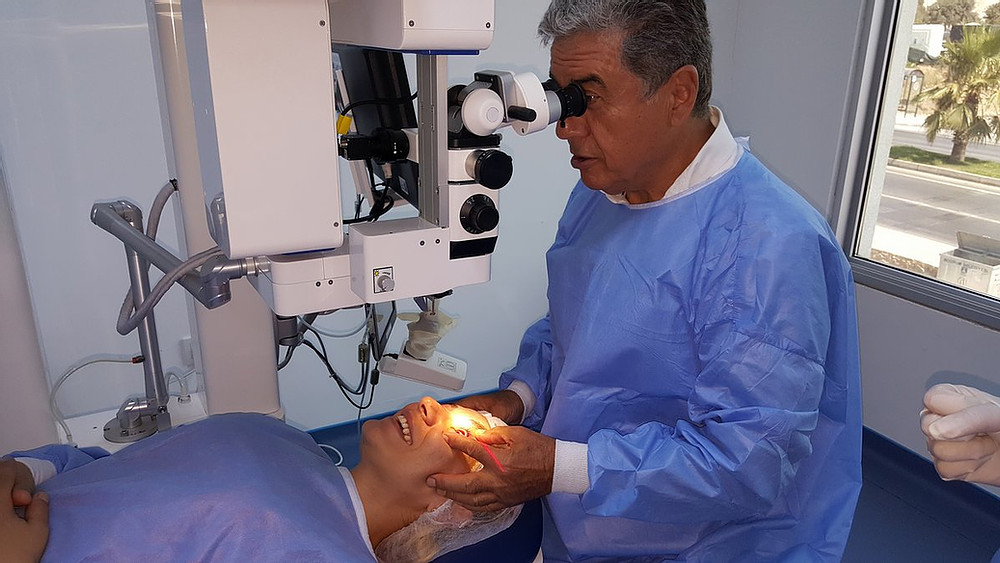Contents
What Is Astigmatism?
In most cases as per research and records, LASIK surgery is able to completely correct astigmatism and can correct the vision permanently. Astigmatism can be understood as a common vision problem. Although it is like a big sounding name, astigmatism is not even an eye disease – it is basically a refractive error such as nearsightedness and farsightedness – and this condition may be corrected with the help of eyeglasses, contact lenses, or LASIK surgery if you do not want glasses or contact lenses.
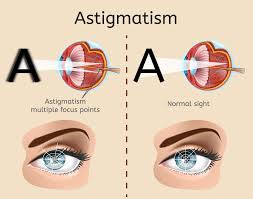
Astigmatism is generally caused by the front surface of the eye (cornea) that is having an asymmetrical shape. “The cornea is shaped like an American football rather than like a baseball” – is an analogy that is frequently used to describe this condition.
Details About LASIK
LASIK surgery can lead to the removal of corrective lenses forever. But this surgery may not be suited to everyone. LASIK surgery is basically designed to remove tissue from your eyes permanently. Doing this will help with the vision problems that astigmatism can cause. In other words, LASIK may prove helpful in fixing or correcting astigmatism.
LASIK proves very successful in treating astigmatism; however, it would work best for people with specific types of astigmatism, and when performed in a particular way. In case LASIK does not suit you or is not right for you then there are many other ways to treat astigmatism.
LASIK surgery happens to have a good track record. Complications leading to vision loss are very rare, and usually, people are satisfied with the results. Some side effects, specifically dry eyes, and temporary visual disturbances are very common which you read in the later section. However, these clear up after a few weeks or months, and very rare people consider them to be a long-term problem.
Your results will depend upon your refractive error and other factors. People having mild nearsightedness have the most success with refractive surgery. People who have a high degree of farsightedness or nearsightedness that is also accompanied by astigmatism have less predictable results.
What Does LASIK Surgery Involve?
There are different variations of laser refractive surgery. It is the most commonly performed and the best known. Most of the articles, including this one, use the term “LASIK” to refer to all types of laser eye surgery.
Generally, images are focused on the retina in the back of your eye. With conditions like astigmatism, nearsightedness (myopia), or farsightedness, they end up being focused somewhere else, resulting in blurred vision.
- Astigmatism – This can lead to overall blurry vision. And is mainly due to mismatching of curves. The curving or flattening of the cornea unevenly results in astigmatism, which leads to a disrupted near and distant vision. It is possible that Astigmatism is present at the time of birth and mainly leads to nearsightedness or farsightedness.
- Nearsightedness (myopia) – This can be understood as a condition in which you see objects that are nearby clearly, however, the objects that are at a distance are blurry. When your eyeball is slightly bigger than normal or when the cornea curves are too sharp, in such cases, light rays tend to focus in front of the retina and blur distant vision. You will be able to see objects that are close more clearly, but not those that are placed at a distance.
- Farsightedness (hyperopia) – It can be understood as a condition in which you are able to see far objects clearly, but nearby objects seem blurry. When your eyeball is shorter than the average size or a cornea that is too flat, light tends to focus behind the retina instead of on it. This leads to a blurry nearby vision and sometimes a distant vision.
Although, blurry vision can be corrected by bending (refracting) light rays with the help of glasses or contact lenses. However, reshaping the cornea (transparent dome-shaped tissue present at the front of the eye) itself would give you the requisite refraction and vision correction.
Before performing a LASIK procedure your eye surgeon will assess measurements of your eye with details. Next, the surgeon will use a special kind of cutting laser to accurately alter the curvature of your cornea. With every pulse of the laser beam, a small amount of corneal tissue will be removed. This will allow your eye surgeon to flatten the curve of your cornea or make it steeper.
Usually, the surgeon constructs a flap in the cornea and then raises it up before reshaping the cornea. There are different variations in which a very thin flap can be raised or no flap is used at all, is raised. Every technique has benefits and disadvantages.
Different Types of Corrective Eye Surgery
Each eye surgeon may specialize in a particular type of laser eye procedure. The variations among them are usually minor and none are clearly better if compared. Analysing your individual circumstances and preferences you can consider:
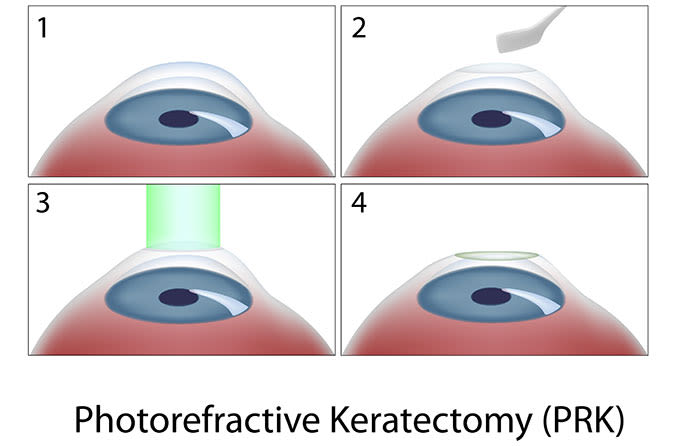
Photorefractive Keratectomy (PRK)
In the process of PRK, instead of forming a flap, the top surface (epithelium) is scraped away. This corneal abrasion may take three to four days to heal, leading to moderate pain and blurry vision for a short period of time. However, with standard LASIK, the risk of eyeball rupture is comparatively low, therefore, there is hardly any great advantage with PRK. LASIK also proves to be a better option as compared to PRK because it can correct more severe nearsightedness (myopia).
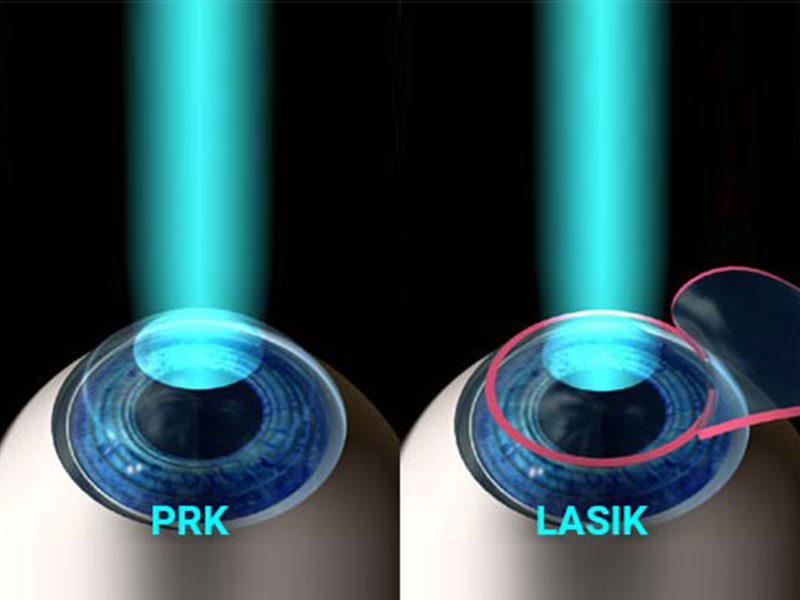
Laser-assisted Subepithelial Keratectomy (LASEK)
LASEK is very much similar to LASIK surgery, however, the flap is made by using a special cutting device, called a microkeratome, and by corneal exposure to ethanol. The procedure grants the surgeon to remove less of the cornea, making it a better alternative for people who happen to have thin corneas. And for those who are at a greater risk of eye injuries. Therefore, LASEK does not have any important benefits over LASIK.
Epithelial Laser-Assisted in-situ Keratomileusis (epi-LASIK)
In an epi-LASIK procedure, the eye surgeon will divide the epithelium from the middle part of the cornea (stroma) by using a mechanized blunt blade device (epikeratome) and he will then reshape the cornea with the help of a laser. This procedure is quite similar to LASEK.
Other Ways For Treating Astigmatism
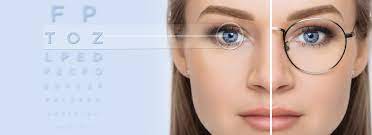
Although LASIK proves to be a very successful option for treating astigmatism, it is not suited to all people. Your eye doctor may prescribe for treating your astigmatism differently in case, you have:
- Thin corneas
- A strong prescription
- An autoimmune disorder
- Dry eyes
You have a health condition that may slow down healing, like diabetes. According to the published research in Europe PMC, LASIK performed with an excimer laser is considered to be the best surgical method for correcting astigmatism. There are also other alternatives available, however, they might not stack up to the advantages of LASIK with this type of machine.
National Eye Institute tells that wearing eyeglasses can be the safest and simplest way to correct astigmatism. Glasses do lead to some visual disturbances; however, you might be able to adjust to those issues.
Is The Eye Surgery Right Choice For You?

It is always necessary to consult your doctor before undergoing any medical treatments same goes with LASIK. It is important to talk and consult eye specialists about whether LASIK is the right choice for you as your surgeon will ask the same detailed questions. You should always consider the points before surgery.
- That you should be older than 18 years
- Should not be undergoing any medical treatment
- Have no health issues like lupus, rheumatoid, and arthritis
- Not dealing with diabetes
- Do not have a weaker immune system or inability to heal infections.
- You are not pregnant or nursing
- Is not actively participated in contact sports
- Do not have any age-related eye changes and your vision is unclear (presbyopia)
Side Effects of LASIK Surgeries
It is also advisable to consult your doctor once about the possible side effects of the treatment. As in rare conditions, people might face some problems like dry eyes, temporary vision disturbances.
So, let us have a broader look over the possible consequences. The loss of vision is a very rare and almost negligible condition. Other minor issues might last for a couple of months that includes:
- Dry eyes– This is one of the complications that you might suffer for some time or possibly a few months after the surgery. This might make you feel uncomfortable but it is the healing process. Once the eyes are completely healed this might also increase at times. For this, your doctor might suggest few eyes drop to ease the whole procedure.
- Double vision- After surgery, there is a possibility that you might have the problem of seeing night for some time. You may also notice glare, haloes around the bright light. All this generally lasts for few days after the eye surgery.
- Excess tears– This is one of the problems that you might face. folding back/removal of the flap from the front eye can cause a problem like infection or tears. Also, the outermost corneal tissue layer might grow underneath the flap while the healing process is going on.
- Undercorrections and Overcorrections– In this condition if very little tissue is removed from the eyes, then your vision might not be as clearer and you might need another refractive surgery. This is common among the people who are nearsighted.
On the other hand, if we talk about the overcorrection in this during the surgery laser might remove more tissue than required. It is a little difficult to fix overcorrection as compared to under-correction.
- Vision change (Rare condition)– There is the rare possibility that you experience the change or loss of vision. This is primarily caused due to some surgical complications. In this, there are chances that people do not see clearly as before the surgery.
Problems You Might Face While Undergo The Surgery
These were some of the problems that you might happen when you undergo the surgery. Although these are not so complicated conditions and only last for a few days/weeks.
People have mentioned they have a good and excellent vision in most situations for many years or decades after the surgery. You will be able to indulge in the sports like swimming and other activities. And most important seeing the clock in the morning where you no longer search for your glasses will be another perk to be counted. But with this, all you need to do is to follow the advice that the doctor gave which sometimes includes wearing glasses for a time if needed.
LASIK has shown good and satisfactory results over time in treating and fixing Astigmatism. There are conditions where one can face difficulties in a long period after making a couple of decades in some cases. But as per the reports, people were very satisfied with its results as this technology has been successfully evolved with time and proven to be useful.
The most important step included in this process is selecting the eye surgeon. So, it is necessary to make a wise choice where you can trust. You must clear all you doubt with the surgeon and then move forward.
Note: The best way to treat your eyes is to visit your eye care professional and get your eyes checked regularly. He will be able to assess the best method of treatment for your eye ailment. Also, if you want to know more than visit our website or contact us for the best advice.
Visit our website Eyemantra.
To book an appointment call +91-9711115191. Or mail us at [email protected].
Our other services include Retina Surgery, Specs Removal, Cataract Surgery, and many more.

